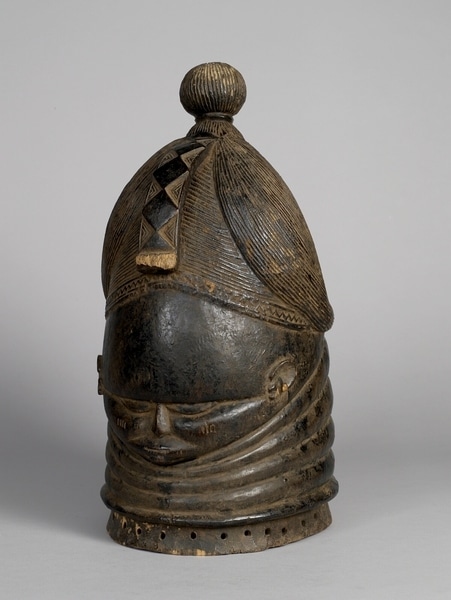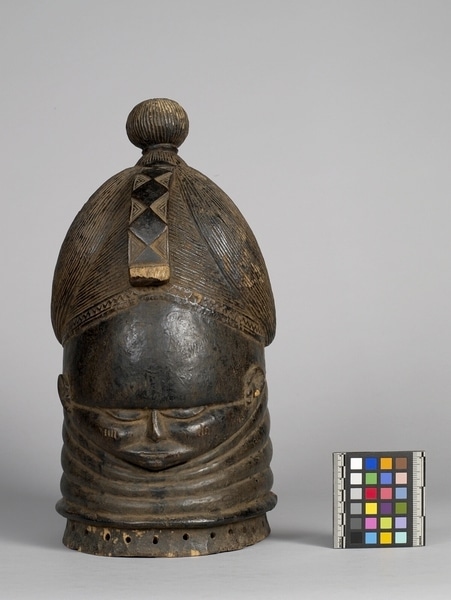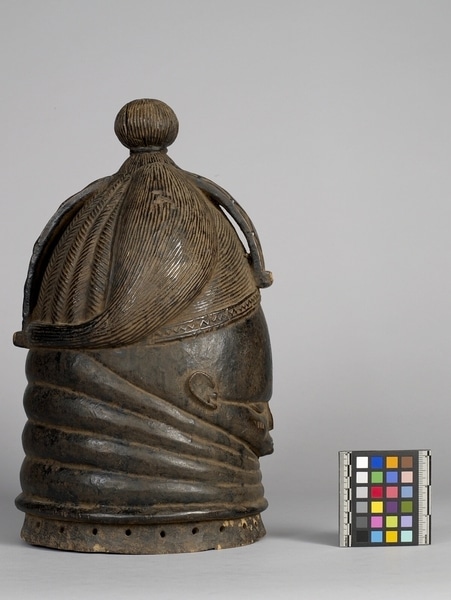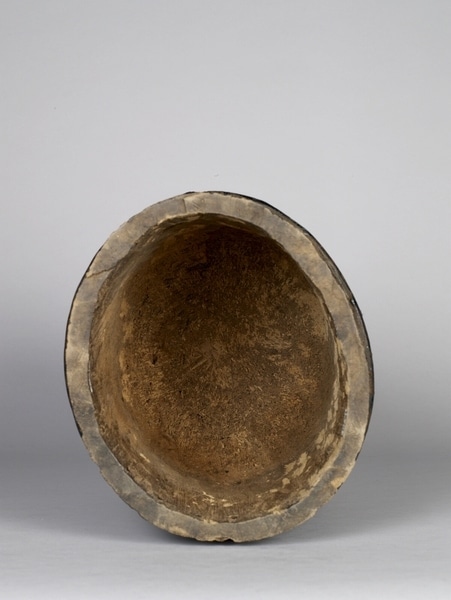Helmet Mask Item Number: K2.432 from the MOA: University of British Columbia




Description
Hollow, brown wood piece of a small female face with a complicated coiffure. The eyes are thin and crescent-shaped. Has a triangular nose and a small, compressed mouth. Four vertical marks are on each cheek. The ears are crescent-shaped. Around the sides of the head, the coiffure has five sets of thin triangular features with diagonal grooves at either back side surrounded by a larger feature with curvi-linear grooves. Along the front and the back, there is a separate band with a diamond-shaped pattern. There is a knob at the top of the head. Around the lower portion of the head, there are six rounded, horizontal bands which go all the way around. A horizontal series of holes is around the lower band.
History Of Use
The sowei, or bundu, mask is made by men but are owned, cared for, worn, and performed as a dance mask by women in the Sande women's society, during girls' initiation camps. There they are prepared for marriage, trained in both domestic and economic pursuits and in singing and dancing. The masked dancers visit the camps to remind the girls of the ideals of female beauty and virtue. When the girls leave, they are considered to be women ready for marriage. During a dance, the mask is worn by a "ndoli jowei" performer, with a full costume concealing the dancer's identity. With their elaborately coiffured hair, neck folds and bright faces- they are burnished with palm oil before being danced- the masks express female ideals of beauty.
Item History
- Made in Sierra Leone
- Owned by Walter C. Koerner before 1972
- Received from Walter C. Koerner (Donor) during 1972
What
Who
- Culture
- Mende
- Previous Owner
- Walter C. Koerner
- Received from
- Walter C. Koerner (Donor)
Where
- Holding Institution
- MOA: University of British Columbia
- Made in
- Sierra Leone
When
- Ownership Date
- before 1972
- Acquisition Date
- during 1972
Other
- Condition
- poor
- Current Location
- Case 98
- Accession Number
- 0160/0088